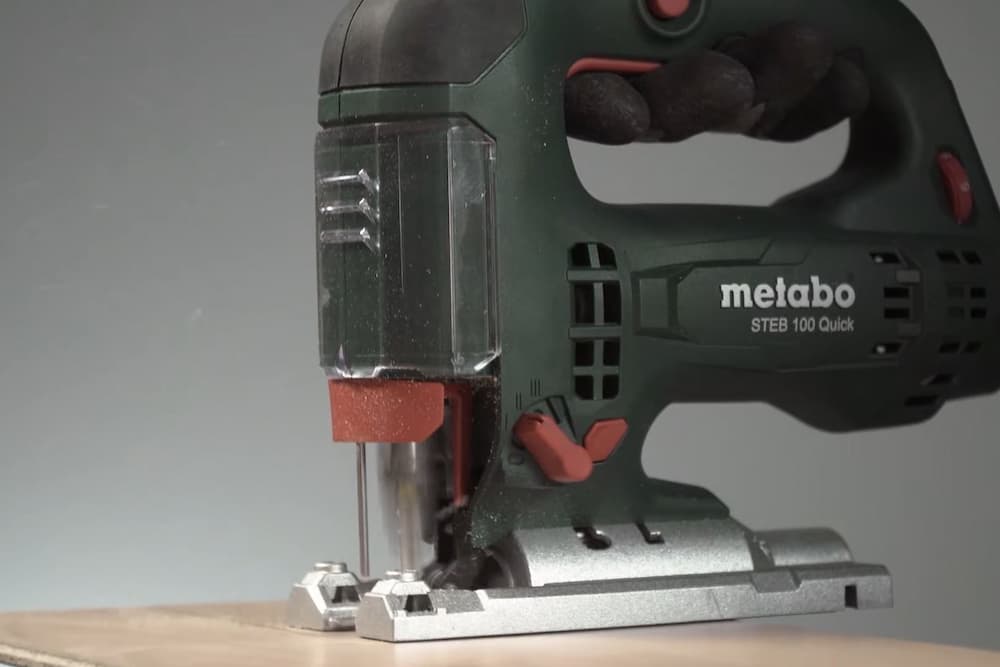If you’ve ever used a jigsaw, you’ve probably experienced the frustration of a bent blade. Jigsaw blades are designed to cut through a variety of materials, but they can bend or deflect during use, causing inaccurate cuts and a lot of wasted time and effort. As an experienced handyman and DIY enthusiast, I understand how frustrating and time-consuming dealing with a bent blade can be.
In this article, we’ll explore the most common reasons why jigsaw blades bend during use and provide tips on how to prevent it from happening. By understanding the causes of blade bending and taking steps to prevent it, you can achieve accurate, clean cuts every time you use your jigsaw. So, whether you’re a DIY enthusiast or a professional contractor, read on to learn how to prevent jigsaw blade bending and improve the quality of your cuts.
Why does jigsaw blade bend?
Here are the most common reasons why jigsaw blades tend to bend when cutting:
- Blade Tension: One of the most common reasons for a jigsaw blade to bend during a cut is a lack of blade tension. When the blade is not properly tensioned, it can vibrate during use, causing it to bend and deflect. Make sure the blade is properly tensioned before you start your cut.
- Material Hardness: The hardness of the material being cut can also cause the blade to bend. If you’re using a jigsaw blade that’s too soft for the material you’re cutting, it can bend or break. Be sure to use the appropriate blade for the material you’re cutting.
- Blade Quality: Poor quality blades can also bend easily during use. Cheap blades made from low-quality materials can deform or lose their shape, causing them to bend during use. Invest in high-quality blades that are designed for the type of material you’re cutting.
- Feed Rate: Feeding the material too quickly through the blade can also cause it to bend. If you’re pushing too hard, the blade can’t keep up, and it will bend or deflect. Slow and steady is the key when cutting with a jigsaw.
- Blade Type: Different blade types have different strengths and weaknesses. Some blades are better suited for cutting curves, while others are better for straight cuts. Using the wrong type of blade for your application can cause it to bend or deflect.
- Sawdust: Sawdust buildup around the blade can also cause it to bend during use. As sawdust accumulates around the blade, it can cause friction and resistance, making it more difficult for the blade to cut through the material.

How to prevent jigsaw blade bending during use?
Here are some tips on how to prevent jigsaw blade bending during use:
- Proper Blade Tension: Make sure the blade is properly tensioned before you start your cut. Use the jigsaw’s blade tension adjustment knob to adjust the tension until the blade is taut and straight. If the blade is not tensioned correctly, it can vibrate and deflect, causing it to bend.
- Choose the Right Blade: Use the appropriate blade for the material you’re cutting. Different blade types are designed for different materials and cutting applications. Using the wrong blade can cause it to bend or break during use.
- Blade Quality: Invest in high-quality blades that are made from durable materials. Cheap blades made from low-quality materials can deform or lose their shape, causing them to bend during use.
- Slow and Steady Feed Rate: Avoid pushing the material too quickly through the blade. Pushing too hard can cause the blade to deflect or bend. Use a slow and steady feed rate to allow the blade to cut through the material smoothly.
- Use the Right Blade Type: Use the appropriate blade type for the type of cut you’re making. Different blade types have different strengths and weaknesses. Using the wrong blade type can cause it to bend or deflect during use.
- Clean the Blade and Surrounding Area: Remove sawdust buildup around the blade and surrounding area regularly during use. Sawdust buildup can cause friction and resistance, making it more difficult for the blade to cut through the material.
By following these tips, you can prevent your jigsaw blade from bending during use and ensure smooth, accurate cuts every time.
Conclusion
Jigsaw blade bending is a common issue that can be frustrating and time-consuming to deal with. However, with the right techniques and tools, you can prevent blade bending and achieve accurate, clean cuts every time. As an experienced DIY enthusiast, I can attest to the importance of taking steps to prevent blade bending during use.
In my experience, investing in high-quality blades and using the appropriate blade for the material and cut can make a big difference in preventing blade bending. Additionally, using a slow and steady feed rate, proper blade tension, and cleaning the blade and surrounding area regularly can also help prevent blade bending.
My advice is to take the time to understand the common causes of blade bending and to take steps to prevent it from happening. With a little extra effort and attention to detail, you can achieve professional-quality cuts with your jigsaw and avoid the frustration of bent blades.
Related Articles

